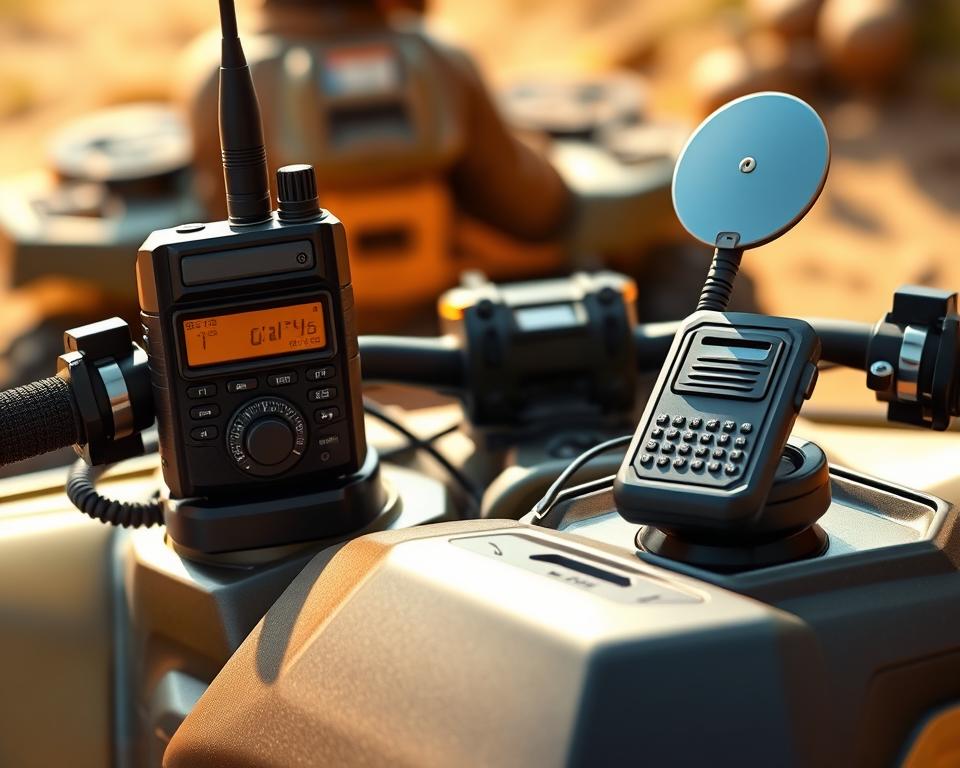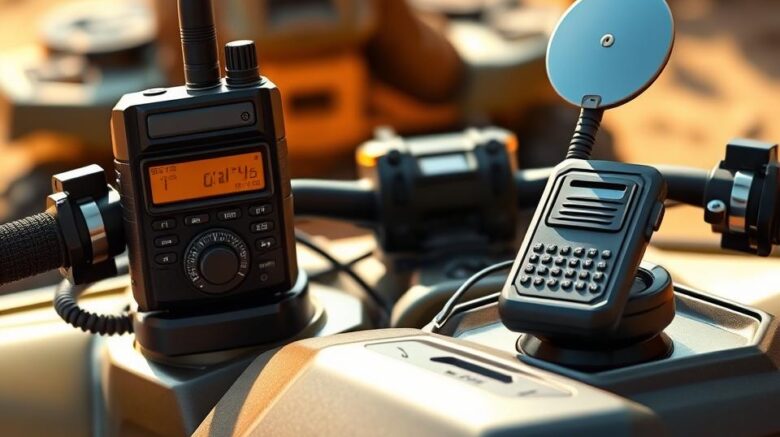Complete ATV Off-Road Safety Prep Guide
It might surprise you to discover nearly about 450,000 ATV-related injuries are treated in U.S. emergency rooms each year? That startling statistic underscores why off-road safety and preparation are essential. Use this Essential ATV Off-Road Checklist to ensure every ride is safe and fun. From boulder-strewn tracks to shifting sands—it’s got you covered. Armed with proper safety equipment and ATV stuff must-haves, you’ll reduce hazards and amplify the fun.
Notable Observations
- Use this checklist first to prep safely and thoroughly.
- An ATV safety gear checklist is vital for protecting yourself during off-road rides.
- Regular maintenance is key to keep your ATV in top shape.
- Hydration and nutrition boost endurance and focus on long rides.
- Master your GPS and maps to stay on track.
- Be ready for unexpected weather changes to stay comfortable during your adventure.
- Trailside fixes? Have your toolkit and recovery gear ready.
Understanding the Importance of Safety Gear
Safety is non-negotiable for every off-road trip. ATVs deliver thrills—and risks. Proper gear guards you against mishaps. Gear up correctly with this ATV safety gear checklist.

Essential Protective Gear
Maximizing protection involves several key items:
- Riding Helmets: Only DOT-certified lids will protect your skull.
- Goggles: Block dirt and grit with quality goggles.
- Riding Gloves: Wear durable gloves for better grip and hand protection.
- Boots: High boots shield your feet and ankles.
- Body Armor: Aggressive riders should consider body armor for extra security.
- Neck Protection: Neck braces can help reduce the risk of spinal injuries.
Emergency Preparedness
Being ready for emergencies is critical. Your emergency bag could be your best friend. Key items to include are:
- First aid kit
- Multi-tool
- Tire repair kits
- Portable air compressors
- Emergency blankets
- Whistles
- Matches
ATV Equipment for Optimal Performance
Gear choices affect how well your ATV runs. Don’t leave home without these ATV must-haves. Routine checks keep your ATV working its best.
Must-Have ATV Equipment
- All-Terrain Tires: Choose tires that grip mud, sand, and rocks.
- Cargo Systems: Keep tools and spares within reach.
- Fuel Reservoir: Never run low—use a proven fuel tank.
- First Aid Kit: Stock your kit with bandages, antiseptic, and meds.
Regular Maintenance for Longevity
Establishing a consistent maintenance routine is vital. Regular inspections should encompass:
- Checking air filters to keep the engine running smoothly.
- Lubricating the chain to ensure optimal performance.
- Inspecting brakes for safety before each ride.
Follow these steps to prep your ride for every trail.
The Essential ATV Off-Road Checklist
Preparing for a ride is more than just hopping on your ATV. An effective ATV maintenance checklist ensures your vehicle’s safety and performance. Cover every item for a worry-free ride. A thorough pre-ride assessment is key to a safe outing.
Pre-Ride Inspection Basics
Never ride without a quick systems check. Catch faults early with a fast inspection. Key elements to check include:
- Tire pressure and tread condition
- Fluid levels such as oil and fuel
- Brakes and controls functionality
- Operational lights and horn
- Chain or driveshaft integrity
T-CLOC Inspection Method
Use T-CLOC for a thorough pre-ride check. It covers Tires and Wheels, Controls, Lights, Oil and Fuel, and Chain/Driveshaft. This method ensures all critical areas are covered:
| Inspection Area | Checklist Items |
|---|---|
| Tires and Wheels | Check tire pressure, inspect tread depth, look for damage |
| Controls | Test brakes, throttle, and clutch for smooth operation |
| Lights | Ensure headlights, brake lights, and indicators are functioning |
| Oil and Fuel | Check oil level, inspect for leaks, and fill fuel tank |
| Chain/Driveshaft | Examine for wear, proper tension, and lubrication |
A quick T-CLOC saves you big trouble later. By checking these essential components, riders can avoid breakdowns.
Hydration and Nutrition for Long Rides
Long ATV rides require careful attention to hydration and nutrition. Riders often underestimate their fluid needs, making it essential to plan ahead. Carry extra water to prevent fatigue and keep energy levels up during the adventure. The right snacks are also key for maintaining stamina on the trail.
Importance of Staying Hydrated
Hydration is critical for ATV riders to stay alert and capable throughout their journey. It’s important to drink water consistently, not just when thirsty. Hydration bladders track consumption at a glance.
High-Energy Snacks to Pack
The right fuel makes the ride smoother. Choose items that won’t spoil in heat. Some ideal choices include:
- Protein bars
- Nut mixes
- Dried fruits
- Beef jerky
These snacks provide a quick energy boost without hindering the riding experience. Mix sweet and salty options for flavor and function.
Navigation Tools for Off-Roading Adventures
Lose fear of getting lost with the right nav gear. Don’t rely on luck or signals—use real navigation.
Advanced GPS Systems
Off-road GPS with offline maps keeps you safe. GPS should work without cell service and last all day. Garmin, TomTom, and others make GPS units built for bumps and dust.
Traditional Navigation Aids
Don’t ditch old-school compasses and maps. Waterproof maps and compasses are vital backups when your GPS fails. Wind your own way with map and compass skills. Combining advanced tech with traditional aids prepares you for any situation on your journey.
Communication Equipment for Safety
Stay in touch even off the grid. Communication gear is as critical as your helmet. Knowing you can call for help reduces stress.
Group rides need reliable radios. Pick units with strong, clear signal range. Get instant alerts about obstacles ahead. When choosing two-way radios, look for models with:
- Weatherproof construction to resist the elements
- Extended run-time for extended trips without needing a recharge
- Channel selection for clear communication without interference
Adding ATV communication gear to your adventure prep is essential. They keep everyone coordinated and secure. Radios cut through noise and barriers. With the right tools, your off-road trips will be smoother and more enjoyable.
Self-Rescue Gear for ATV Riders
Self-rescue gear is as vital as your helmet. Relying on yourself starts with proper rescue tools. Being self-sufficient elevates confidence and safety.
Winches and Recovery Kits
Winches are vital for self-rescue, helping pull your ATV from tough spots. Kit up your winch for maximum extraction muscle. Recovery kits usually include:
- Tow straps
- D-rings
- Recovery boards
- Gloves
Knowledge plus gear equals true self-rescue. With quality ATV recovery kits, you can overcome mud, rocks, or other obstacles and continue your journey.
Trail Recovery Essentials
Winches are just the start; several trail recovery essentials are also critical for off-road adventures. These include:
| Equipment | Purpose |
|---|---|
| Recovery Straps | Used for towing or pulling ATVs out of tight situations. |
| Shovel | Helps clear obstacles and dig out vehicles when stuck. |
| Traction Mats | Provides grip under tires in muddy or slick conditions. |
| Portable Air Compressor | Enables quick tire inflation after deflating for better traction. |
Arming your ATV with the right self-rescue gear ensures you can handle any obstacles. Practice rescues so you’re ready when it counts.
Staying Adaptable: Preparing for Weather Changes
Weather variability is a major challenge in off-roading. It’s vital to be ready for sudden changes to stay safe and enjoy the ride. Don’t forget your layers and rain shell.
Dress in layers to stay comfortable. A dry base keeps you cozy. Mid-layers trap heat and pack small. Finish with a rain-and-wind jacket. Adapt to cold, heat, or storms easily.
Weather-Appropriate Clothing
- Waterproof Jackets: Stay dry when the sky opens up.
- Breathable Pants: Stay cool and dry with breathable pants.
- Sun Protection: Sun-blocking shirts and hats prevent overexposure.
- Insulated Gloves: Insulate your hands against cold snaps.
Don’t let the weather ruin your ride. It keeps you comfortable and safe, letting you enjoy the adventure without worrying about the weather.
Tools for On-Trail Repairs
Having the right tools for on-trail repairs is key to a safe and enjoyable off-roading experience. Don’t skimp on repair gear. Tackle trailside trouble with confidence.
Must-Have Tools and Kits
Keep these tools handy at all times. A compact kit with everything you need. Critical ATV repair tools might include:
- Tire irons for changing flat tires
- Pliers for gripping and cutting
- Wrenches for various sizes of bolts and nuts
- A multi-tool for versatility
- Spare items such as spark plugs and electrical wire
- Duct tape for quick fixes
Tools at hand mean no surprises.
Basic Emergency Supplies
In addition to essential tools, packing basic emergency supplies for ATV is vital. These supplies help ensure your safety in challenging situations:
- First aid kit for injuries
- Flashlight with extra batteries for night-time visibility
- Emergency whistle for signaling assistance
- Reflective triangles or flares to warn other riders
- Water and high-energy snacks for sustenance
Preparedness significantly impacts your off-roading experience. Never leave home without them.
The Bottom Line
Well-planned rides are the best rides. Follow this checklist and choose quality gear. This ensures you’re ready for any terrain.
With the right protective gear, navigation tools, and communication equipment, you’re set for safe riding. Plan smart to ride hard and safe. It lets you enjoy the thrill of off-road adventures without worry.
Be prepared, ride safe, and make great memories. The journey is as important as the destination. By following the Essential ATV off-road checklist, you’re set for an incredible adventure in the great outdoors.
FAQ
What must an ATV safety checklist cover?
Start with a DOT helmet and sturdy goggles. Add gloves, boots, and torso protection. Consider a neck brace for extra safety. Always carry a first aid pack and a multi-tool.
How can I ensure my ATV is well-maintained?
Inspect air filters and grease the chain often. Always test your brakes before a ride. Regular service keeps your ATV trail-ready.
What does the T-CLOC inspection method entail?
T-CLOC inspects five critical systems. Cover Tires, Controls, Lights, Oil/Fuel, Chain in T-CLOC. This ensures your ATV’s critical components are in working order before hitting the trails.
How much water should I bring on an ATV trip?
Overestimate your water needs. Stay topped off to avoid dehydration. Use a hydration bladder for quick sips.
Must-have navigation tools for ATV trips?
Use an off-road GPS unit. Combine this with traditional aids like waterproof maps and compasses.
Why carry two-way radios?
Comms keep groups connected and safe. Areas with limited cell service highlight the need for reliable two-way radios.
What self-rescue gear should every ATV rider carry?
Every ATV rider should carry a winch and a detailed recovery kit. Have straps, shackles, mats, and gloves on hand.
How can I prepare for sudden weather changes while off-roading?
Layer up and down as conditions shift. Waterproof gear is necessary to stay dry during unexpected rain. Sun protection is also critical to prevent UV exposure.
Which trailside tools matter most?
For on-trail repairs, pack a basic tool kit for minor fixes. Include tire irons, pliers, wrenches, a multi-tool, and spare parts like a spark plug.
